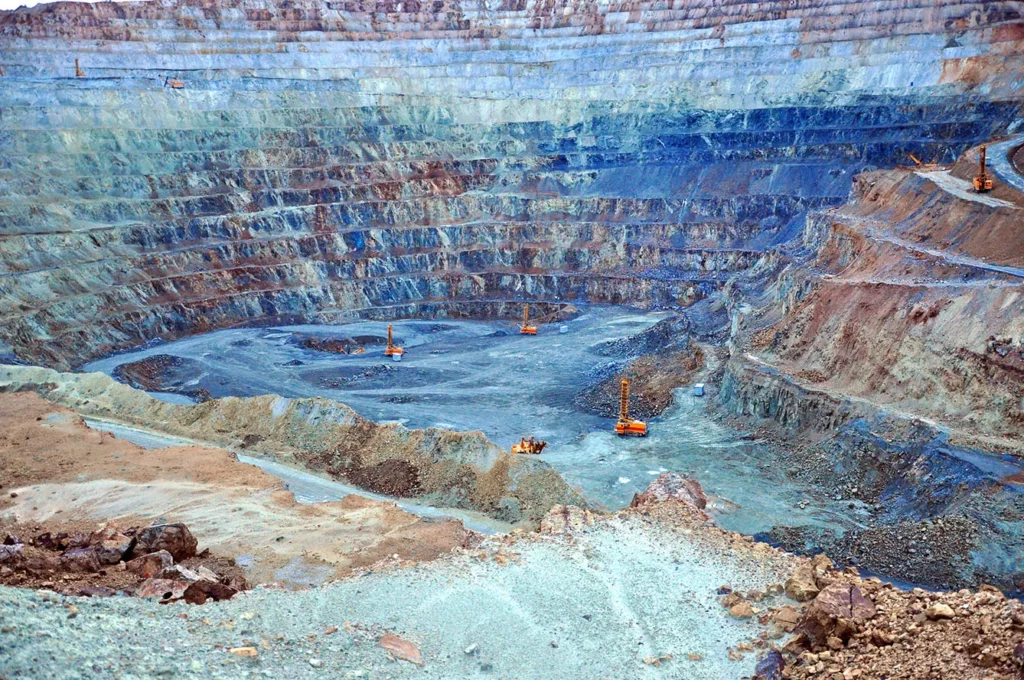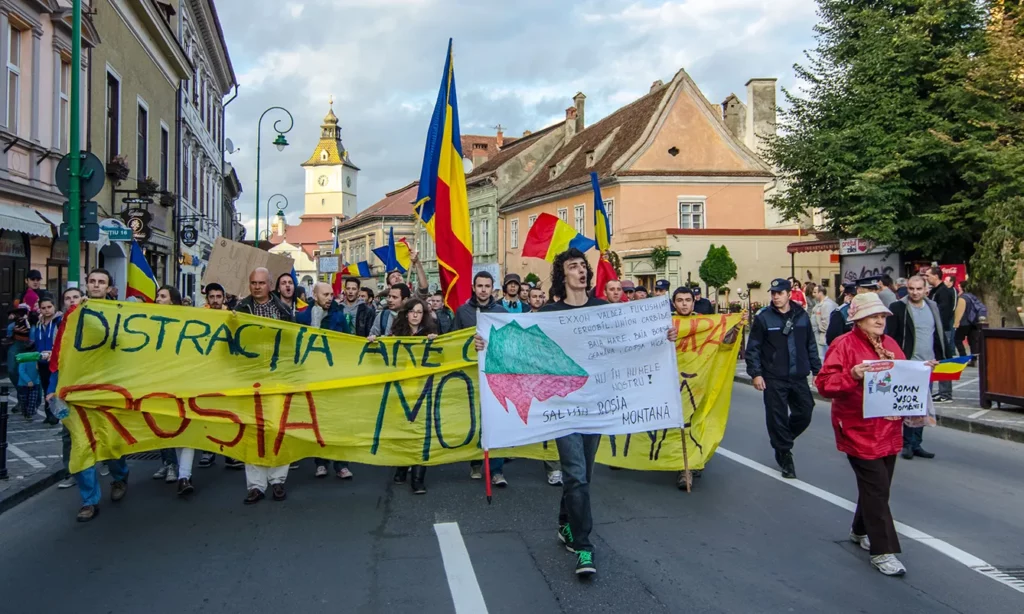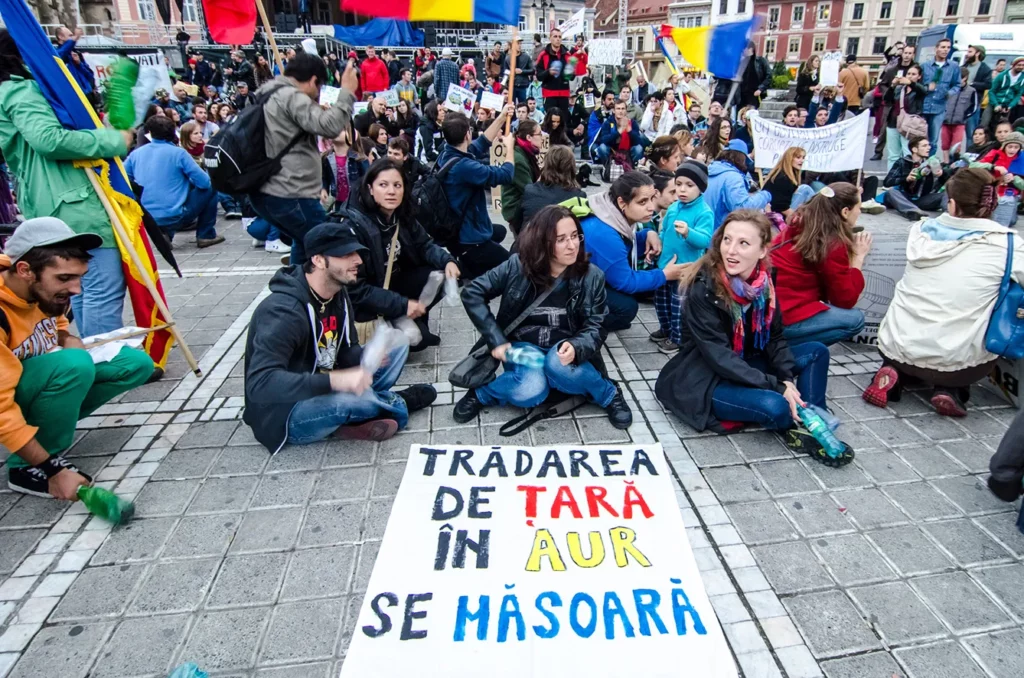The history of the Roșia Montană mining site dates back to 131 BC when the Romans set the first permanent settlement for slaves and settlers who worked in mining. For 1900 years, this activity continued to be the main occupation and source of income for the people of the province, making it one of Europe’s oldest mining establishments, whose activity survived uninterrupted until the beginning of the 21st century.
Known for its hundred kilometers-long historical galleries and for hosting a multicultural society with pluralistic religious confessions, Roșia Montană is often regarded worldwide as a unique village. But above it all, the region is known for its auriferous ore. Buried deep within the Apuseni mountains hides Romania’s (and possibly Central Europe’s) greatest deposit of gold.
A hidden treasure trove
Throughout the centuries, the resources hidden in the Roșia Montană land have always been a hot spot of interest for the Empires, occupations, and regimes that oppressed the country. But the latest attempt to exploit the gold reserves started in the late 1990s, giving the beginning to one of Romania’s largest civic movements, aiming to save not only the natural and historical site of Roșia Montană but also its people. The exploitation project, known as the Roșia Montană Mining Project and operated by the Romanian-Canadian enterprise RMGC, aimed to transform the region into Europe’s largest open-pit gold exploitation. The excavation process, which implied the use of cyanide, also required the destruction of four mountain peaks and three villages.
While the immediate impact brought great distress to the community, the long-term concerns over the environment and its negative effects worried an entire country. The mine was set to operate for 16 years, during which the cyanide processing plant and the 300 hectares of chemical settling pond would make life unbearable not only for the region’s current inhabitants but for generations to come.



View of polluted water by copper mining in Romania, Geamana. Photo: iStock.com / alpinetrail
The news sparked multiple actors’ indignation, so Romania’s second-largest movement after the 1989 Revolution started. A diverging gap soon emerged between the supporters of the investment and the public sentiment. Multiple organizations, such as the Romanian Academy, a highly renowned scientific national institution, and the Bucharest Academy of Economic Sciences, were quick to aid the local community in their fight against the supposed benefits of investment and revenue.
The Save Roșia Montană movement
The “Save Roșia Montană” movement soon began gaining more and more momentum, and the “bleeding leaf,” the symbol of the mobilization, was now covered by every media outlet. Hundreds of people joined protests all over the country, and Churches of various denominations took part in refusing to sell their properties to make room for the mining exploitation. For years to come, the question of Roșia Montană was constantly brought back and forth, with both sides strongly supporting their cause.
Every mention of the site is like an air strike, counteracted with another attack, leaving everyone wondering what will happen with the hundreds of people, the history and legacy, and, last but not least, the gold reserves in Roșia Montană. For the locals and for the worldwide supporters of the movement, however, there was only one answer to this question, and after years and years of public pressure, it began to seem like all the effort was starting to pay off.
Breakthrough was finally reached in 2013 when public resentment against the mining project reached such high peaks it became Romania’s largest civic movement since the 1989 Revolution. The Save Roșia Montană movement maintained that title until 2017, when the anti-corruption movement against pardoning certain crimes took over as the largest initiative. Save Roșia Montană was the catalyst force that set in motion the determination of Romanians to always fight for their rights and beliefs, reminding the world of the true meaning of demos and kratos.


The government finally caves
And so, the Government gave in – or so it was thought. Despite all the genuinely great improvements that have been made in securing the safety of the region, it took another nine years of protests, recommendations, continuous fights, and tremendous sacrifices of public and private actors to finally achieve UNESCO status for Roșia Montană, thus officially deeming the site as ineligible for mining exploitation. But RMCG, operating under Gabriel Resources, wouldn’t give up that easily and sued the Romanian Government for over 4 billion US dollars.
Today, over 20 years since the day it all started, Roșia Montană and its people are finally safe. But the issue is far from being resolved. Who will win and who will lose the fight for gold and for Roșia Montană? Certainly, Romanians have proved that people have power, and when there is a will, there is a way, even if you have to make it yourself.







